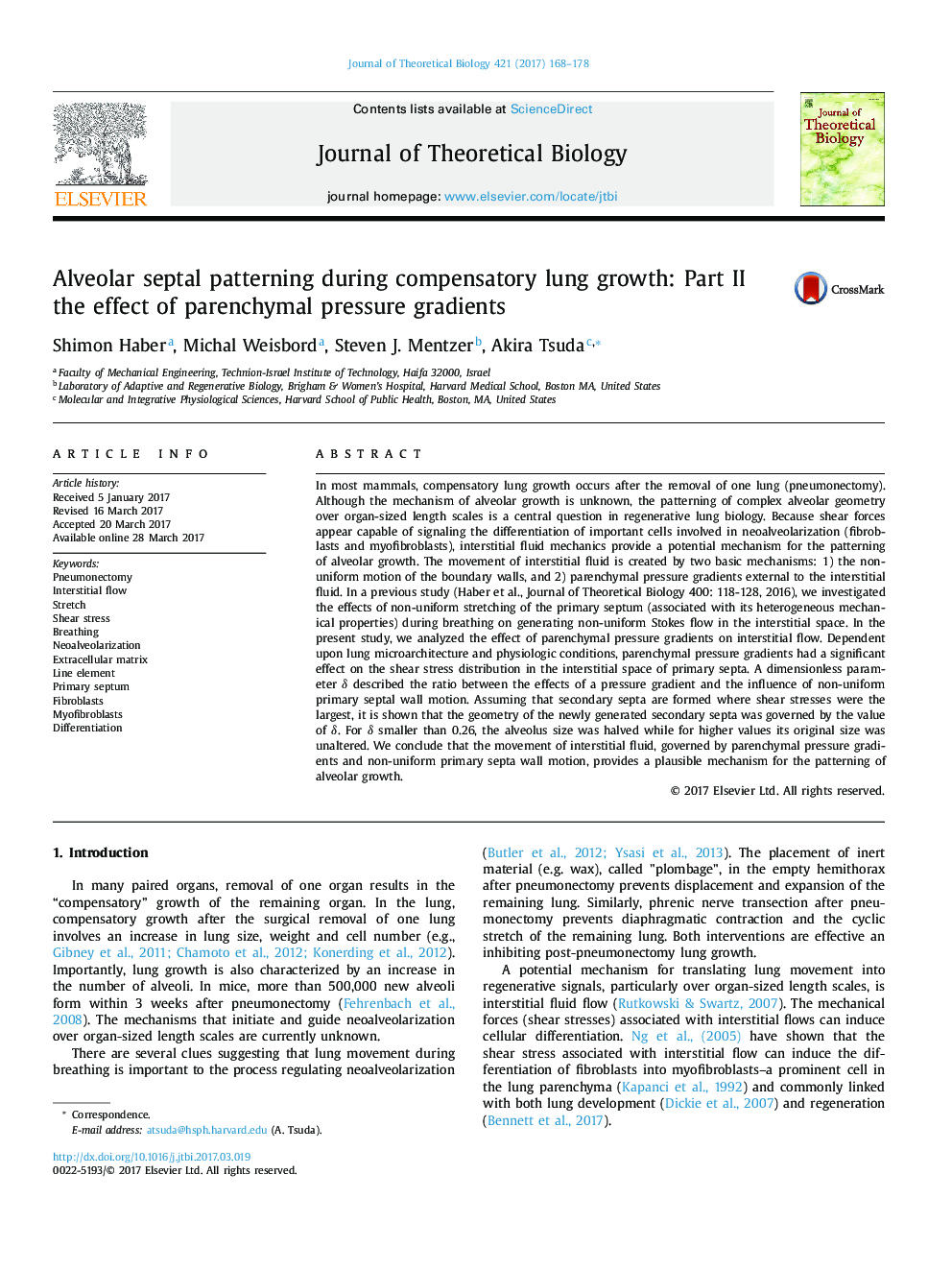| کد مقاله | کد نشریه | سال انتشار | مقاله انگلیسی | نسخه تمام متن |
|---|---|---|---|---|
| 5760030 | 1623789 | 2017 | 11 صفحه PDF | دانلود رایگان |
عنوان انگلیسی مقاله ISI
Alveolar septal patterning during compensatory lung growth: Part II the effect of parenchymal pressure gradients
ترجمه فارسی عنوان
الگوی جداسازی آلوئولار در طول رشد جبرانی ریه: قسمت دوم اثر گرادیان فشار پارنچیمال
دانلود مقاله + سفارش ترجمه
دانلود مقاله ISI انگلیسی
رایگان برای ایرانیان
کلمات کلیدی
موضوعات مرتبط
علوم زیستی و بیوفناوری
علوم کشاورزی و بیولوژیک
علوم کشاورزی و بیولوژیک (عمومی)
چکیده انگلیسی
In most mammals, compensatory lung growth occurs after the removal of one lung (pneumonectomy). Although the mechanism of alveolar growth is unknown, the patterning of complex alveolar geometry over organ-sized length scales is a central question in regenerative lung biology. Because shear forces appear capable of signaling the differentiation of important cells involved in neoalveolarization (fibroblasts and myofibroblasts), interstitial fluid mechanics provide a potential mechanism for the patterning of alveolar growth. The movement of interstitial fluid is created by two basic mechanisms: 1) the non-uniform motion of the boundary walls, and 2) parenchymal pressure gradients external to the interstitial fluid. In a previous study (Haber et al., Journal of Theoretical Biology 400: 118-128, 2016), we investigated the effects of non-uniform stretching of the primary septum (associated with its heterogeneous mechanical properties) during breathing on generating non-uniform Stokes flow in the interstitial space. In the present study, we analyzed the effect of parenchymal pressure gradients on interstitial flow. Dependent upon lung microarchitecture and physiologic conditions, parenchymal pressure gradients had a significant effect on the shear stress distribution in the interstitial space of primary septa. A dimensionless parameter δ described the ratio between the effects of a pressure gradient and the influence of non-uniform primary septal wall motion. Assuming that secondary septa are formed where shear stresses were the largest, it is shown that the geometry of the newly generated secondary septa was governed by the value of δ. For δ smaller than 0.26, the alveolus size was halved while for higher values its original size was unaltered. We conclude that the movement of interstitial fluid, governed by parenchymal pressure gradients and non-uniform primary septa wall motion, provides a plausible mechanism for the patterning of alveolar growth.
ناشر
Database: Elsevier - ScienceDirect (ساینس دایرکت)
Journal: Journal of Theoretical Biology - Volume 421, 21 May 2017, Pages 168-178
Journal: Journal of Theoretical Biology - Volume 421, 21 May 2017, Pages 168-178
نویسندگان
Shimon Haber, Michal Weisbord, Steven J. Mentzer, Akira Tsuda,
